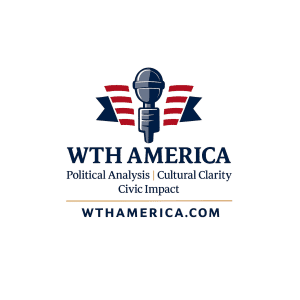
Spain’s Deputy PM: Workers Have the Power
April 6, 2025
For these seniors, DOGE’s affordable housing pause means suffering longer without AC
April 6, 2025AS THE TRUMP ADMINISTRATION has hacked away at the Department of Health and Human Services these past few weeks, most of the attention has focused on the cuts applied to high-profile agencies like the National Institutes of Health and the Centers for Disease Control and Prevention.
But HHS is huge, containing multitudes of other agencies, offices, and programs, both obscure and well known. Among these are two big child-care programs for low-income families: Head Start, which pays specially licensed centers to provide free, enriched care for toddlers and infants; and the Child Care and Development Fund, which gives states money they can use to provide discounted care for kids up to age 13.
The HHS layoffs have hit the offices managing these programs too. And the consequences look a lot like what we’re seeing elsewhere in HHS and across the rest of the federal government: organizational chaos, interruptions of service, and the prospect of significant program failures in the future.
Collectively, the two federal programs serve a few million children—which, in the grand scheme of things, may not seem like that much. But the stakes are substantial, because of who these kids are.
Research has shown repeatedly that the turmoil and deprivation of growing up in poverty dramatically increases the chances a child will eventually fall behind in school, struggle in the adult workplace or—in the worst cases—end up in the criminal justice system. There’s also a lot of evidence that well-designed early childhood programs can counter these effects by equipping children with emotional and cognitive tools that will help them later in life.
At their best, the programs that HHS administers do just that. And they do it at a bargain price, because successful early-childhood investments can generate large future returns in the form of healthier, more productive adults.
But it has never been easy for these offices in HHS—chronically beleaguered, perpetually understaffed, perennially under threat from right-wing budget-cutters—to help the programs realize their potential.
And now, thanks to the Trump administration, the task is almost certain to get harder.
THE HHS DIVISION THAT RUNS federal early-childhood programs is called the Administration for Children and Families, or ACF. It had about 2,400 employees in January, before two rounds of layoffs—one in February, and then another this past week.
I can’t tell you precisely how many employees remain at ACF or which employees remain, because the Trump administration has been as clear about explaining changes at HHS as it has been about explaining changes everywhere else in the bureaucracy. Which is to say, it has not been clear at all. (That includes not responding to my inquiries on this story.)
But a group of former HHS officials have created a rough list of the layoffs based on what they’ve learned from their old colleagues. According to that document, which some of the officials forwarded to me, the ACF staff is now down to about 1,500. That’s a reduction of about 38 percent.
And while it is not clear exactly how many of those fired had been working on either of the two big child-care programs, it appears many were. One of the sources I consulted this week was Ruth Friedman, a Century Foundation fellow who during the Biden administration was director of the Office of Child Care (which administers the Child Care Development Fund). She says the staff in that office is down to roughly sixty people now, about half what it was before the layoffs.
When announcing the departmentwide downsizing, HHS Secretary Robert F. Kennedy Jr. acknowledged the job cuts would be “painful” but swore the department could “do more with less.” Former officials, advocates, and child-care providers from around the country I consulted this week were deeply skeptical.
One reason is that many of the staff who lost jobs were at one of the five (out of ten) regional HHS offices shuttered in the departmentwide downsizing. Regional staff are the ones who check that child-care programs are meeting federal standards for performance, while offering advice to state officials and care providers on how to meet those standards. Regional staff are also the ones who help states and individual providers navigate paperwork and bureaucracy issues, which come up frequently—and which, when unresolved, can slow payments.
That’s a big deal given that early-childhood programs frequently run on thin margins, so that a delay of even a week or two can cause financial difficulty.
“You have some Head Start grantees that are pretty small, particularly in rural areas, and they are so reliant on those federal funds,” Katie Hamm, who as an HHS deputy assistant secretary during the Biden administration oversaw early childhood programs. “If they don’t get their federal funding, they can’t make payroll, and if they can’t make payroll, they cannot operate.”
But there’s a second layer of concern that goes beyond maintaining a smooth funding stream.
It’s rooted in how the thinking about early-childhood care has evolved in the past decade or so, thanks to science establishing more firmly that the first two to three years are a critical time for brain development—and to media reports on poor program quality and safety problems, including a few tragedies.
In response, lawmakers and government officials have tried to bolster federal child-care programs through a combination of legislation and regulation. Democrats have led these efforts during the Obama administration and then again during Biden’s, although the effort has drawn bipartisan support. Some of the steps took place during—and with the support of—Trump’s first administration.
Among the changes were a new set of safety regulations for federally subsidized child care, dictating things like requirements that workers get the latest information on safe baby-sleeping methods and that they learn CPR. The process of putting those standards in place was slow and halting, as frequently happens in the public sector. But in just the last two years or so HHS was finally able to hire staff to monitor these new standards.
Now those workers are mostly gone, according to several sources familiar with the administration’s cuts, leaving active files on everything from payment errors and grant issues to investigations of potential safety infractions.
One former employee familiar with Head Start told me they knew of an open inquiry into a report of an instructor who struck a child. (Head Start providers contract directly with the federal government, not the states, so it’s federal workers who respond to reports like these.) It’s not clear who’s going to manage that case going forward, the former employee told me, because the one who had been handling it lost their job.
That kind of incident appears to be rare. HHS gets only a few dozen serious conduct or safety violations a year from across the entire Head Start program, according to federal data. But one reason for that may be that every such incident triggers a full investigation, followed by extensive consultations afterwards—as was happening in that particular case—to make sure the incidents don’t recur.
Fewer staff will make it harder to maintain that kind of effort going forward.
“You’re cutting the office in half, and you’re saying that they are going to do the same or more,” Hamm said. “I think that’s completely unrealistic.”
FOR YEARS, THERE HAS BEEN A SERIOUS DEBATE over the effectiveness of existing early-childhood programs, and more broadly over what an ideal approach would even look like.
Many conservative-leaning intellectuals who study these programs have argued, for example, that the federal government overregulates child care, making it unnecessarily expensive (and saddling operators with too much compliance work) without actually improving quality. Many have also said federal subsidies tilt the playing field too far in the direction of care in large centers, which not every family wants.
And that’s on top of broader arguments that HHS’s sprawling bureaucracy is full of redundancy and unnecessary layers.
Nobody would have been surprised had the Trump administration methodically pursued an agenda consistent with that thinking, and even die-hard defenders of the status quo might have embraced some parts. But the Trump administration didn’t carefully draw up a reform blueprint, issue new regulations, or call on Congress to pass new laws. That’s just not the Trump way.
Instead, it just fired a huge chunk of the workforce, in what appears to be the most shambolic manner possible. Early-childhood workers who lost their jobs found out by email in the morning and then had only a few hours (if that) before they lost access to their electronic files. Some showed up at work, where they were told to surrender their badges and given just enough time to clean out their offices.
“It’s very clear these changes are happening without thought, without a plan in place,” Stephanie Schmit, director of child care and early education at the Center for Law and Social Policy, told me.
And it wasn’t just the workers who found out at the last minute, according to Olivia Golden, who served as HHS assistant secretary for children and families during the Clinton administration. “Career leadership had no idea what was happening until people started calling them that day that they were being fired, or they were fired themselves,” Golden told me.
That left no time for officials to transfer information about contacts to remaining staff. Head Start providers not only lost longstanding relationships with their HHS handlers, but have yet to be told who they should contact instead. As of Friday, several told me, the only communication from HHS was a notice telling them they could upload memos with questions or comments to an HHS website.
“THESE ARE DEVASTATING CUTS, which will absolutely gut the offices, and make it so they can’t function in a way to meaningfully support the child care law,” Friedman said. “I strongly believe that, ultimately, what this is going to mean is that childcare will become less safe, more expensive, and harder to find.”
It’s hard not to wonder if the damage is intentional, given that Project 2025 called for wiping out Head Start and the existing child-care subsidy system—and that trying to do that by passing legislation would be difficult politically. That’s especially true for Head Start, a legacy of the Great Society that polls have found to be highly popular.
Whatever the administration’s true motives, the firings send a clear message about how much it values early-childhood programs—and the people who work in them—in a way that could have long-term consequences.
“The directors who work in, who manage Head Start programs in our communities, they are some of the most hard-working, amazing individuals I have ever met—and now this is added to their plate,” Jennie Mauer, executive director of the Wisconsin Head Start program, told me. “This amount of uncertainty, it’s just soul crushing.”
Schmit noted that the child-care workforce as a whole is notoriously underpaid, especially given the stress that comes with the job.
“You add the chaos and confusion of this,” Schmit said, “and you begin to question if this is a place that is a job that is stable for you, a job that is going to meet your own needs. And so I worry about the domino effect, the impact that this is going to have on the workforce—directly because of the dollars, but also indirectly, because of the broader chaos and confusion that’s going to lead to challenges in people’s own lives.”
Great Job Jonathan Cohn & the Team @ The Bulwark Source link for sharing this story.






